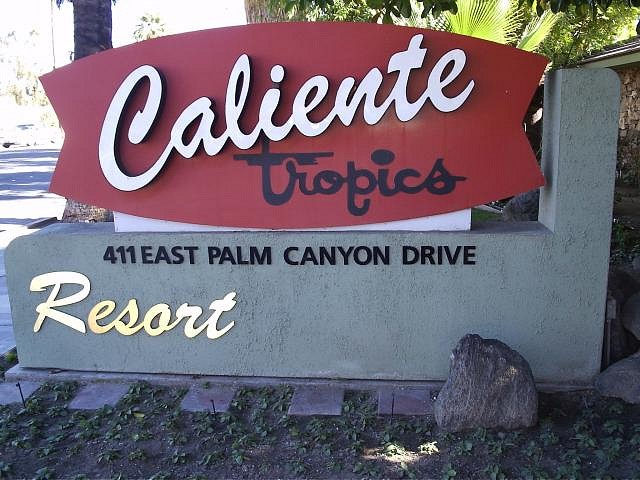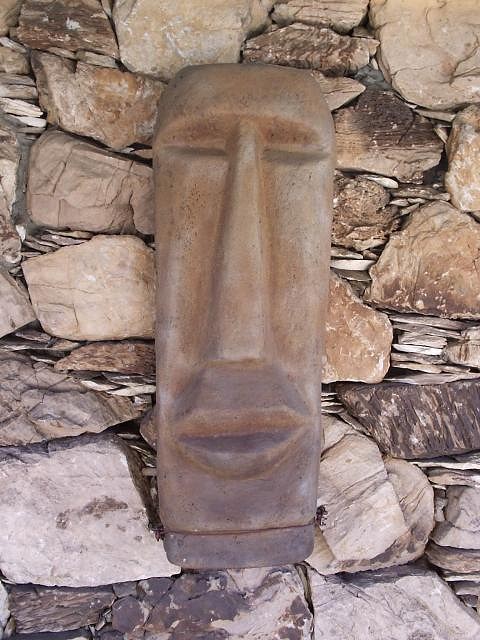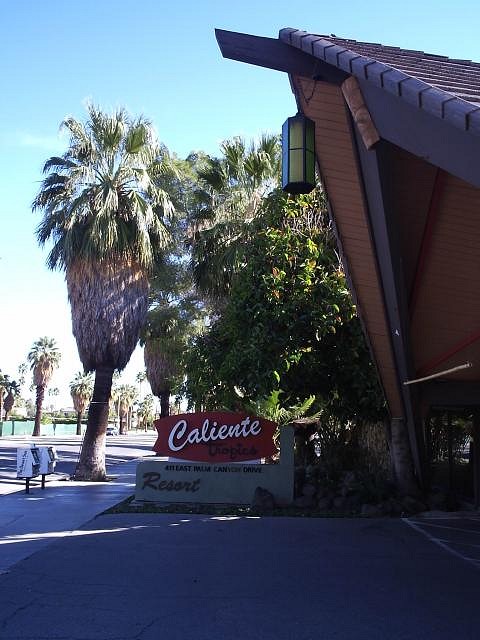Tiki Central / California Events / Tiki Caliente May 9th-May 11th 2008 in Palm Springs
Post #376750 by Wildsville man on Mon, Apr 28, 2008 10:54 AM
|
WM
Wildsville man
Posted
posted
on
Mon, Apr 28, 2008 10:54 AM
A little history for you all about the Caliente Tropics!!! Caliente Tropics History: Built in 1963 and opened in 1964, by Ken Kimes, Sr., the tropics was number 38 out of 45 motels Kimes developed in the U.S. Five of the motels were Polynesian styled. Sister Polynesian properties were located in Indio as well as Modesto, Blythe, and Rosemead. At some point in the early ‘60s, 50 condominium units were annexed on Twin Palms Drive (across the street). Those units were spun-off and turned into apartments and are no longer part of the Resort. Our Polynesian personality is reflected not only in the architecture of the Resort, but in the accoutrements as well. Oceanic Arts, considered by many tiki-followers to be the “Grand Daddy” of Polynesian pop-culture, designed and manufactured most of the tiki gods and artifacts throughout the Resort. It is primarily these artifacts that are considered to be the most valuable to the tropics lineage. Oceanic Arts still dominates as the primary source for this pop culture niche and, in recent years, has enjoyed a major rebirth in business. Oceanic Arts is currently a primary supplier to Disney, worldwide. In addition to Sambos (coffee shop), The Reef (cocktail lounge), the Congo Room (steakhouse), and the Cellar (basement cocktail lounge for 100!), the central building also housed the main lobby. According to locals, the tropics rocked-and-rolled during the ‘60s and ‘70s. It was frequented by members of the Rat Pack and professional ball teams (Palm Springs was a major training venue). Elvis and Nancy Sinatra liked to hang out at the pool, and Victor Mature had “his” table in the Congo Room. The tropics was to the south end of Palm Springs what the Racquet Club had been to the north end. In the ‘80s, as Palm Springs lost its allure, the resort became an abused relic and a favorite spring break hangout. It was the scene for parades of cars cruising the parking lot, fence jumping, broken furniture, holes in walls, unruly behavior, illegal activity, and numerous visits from the Palm Springs Police. At the same time it became the site of (if not the first) Miss Hawaiian Tropics Pageant and the Reef did a booming business—to the tune of about $250,000 gross, a year. The Resort changed hands in the late ‘80s and continued to slide until 2000. Starting in the ‘60s, as a Hyatt Lodge, then becoming a Best Western at its peak, then a Days Inn, and eventually a Rodeway Inn, the property was headed for the wrecking ball by the mid-90s. The old tropics was kicked out of Rodeway Inns, the Palm Springs Visitors Center, and the Palm Springs Desert Resorts Convention and Visitors Authority. When it was “rescued” by the current owners, in 2000, unsavory characters were staples to the tropics “scene.” The Resort currently enjoys life as an independent property operated by Townhouse Development, Inc., and Conde Nast Johansens. It is marketed as an alternative to big “box” and chain hotels with no personality, caters to pets and non-smokers and has become a popular venue for photo shoots and cinematographers. Fun fact: Ken Kimes, his wife (Sante) and son (Kenny), were the subject of a movie released in 2001, “Like Mother, Like Son,” starring Mary Tyler Moore and Jean Stapleton. Portrayed as a world-class con team, Sante and Kenny are currently incarcerated for murder.
|



